350 sf of damaged concrete repaired on luxury midrise
1700 Broadway
San Francisco
Older concrete buildings like this, with many layers of coating built upon each other over the years, need to be inspected for loose or spalling concrete. Concrete spalls are caused by water entering the porous concrete, contacting the steel reinforcing, and causing it to corrode.
As the steel corrodes, it grows, causing the concrete around it to crack and become loose, or “spall”. These spalls can pose structural issues for the building and safety hazards to pedestrians when they completely dislodge and fall to the ground.
In this case, the thick layers of coating were hiding many large concrete spalls and cracks in the concrete facade underneath. Our team worked with the owner to help manage the costs of the repair by accessing the project using swing stages.
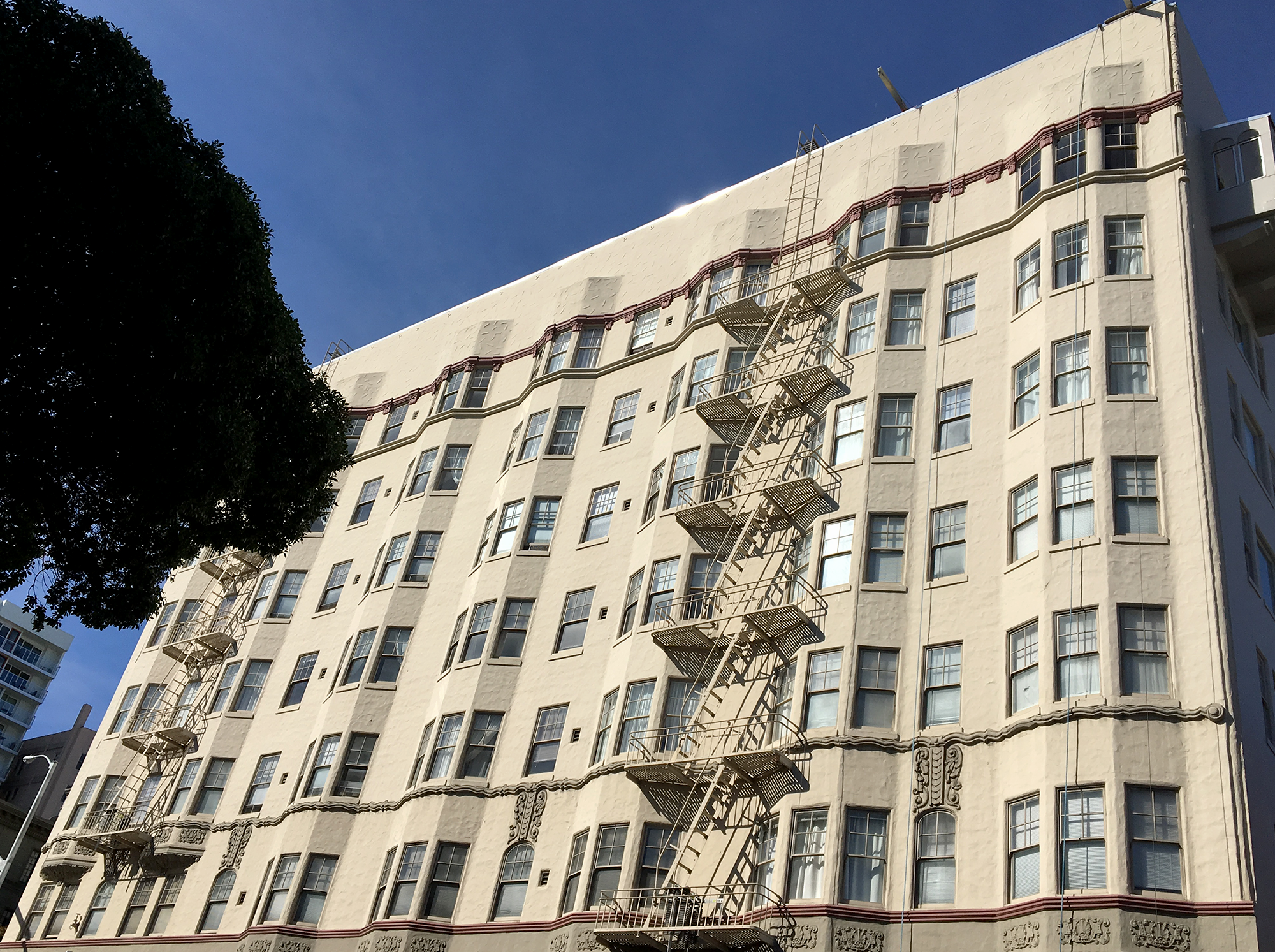
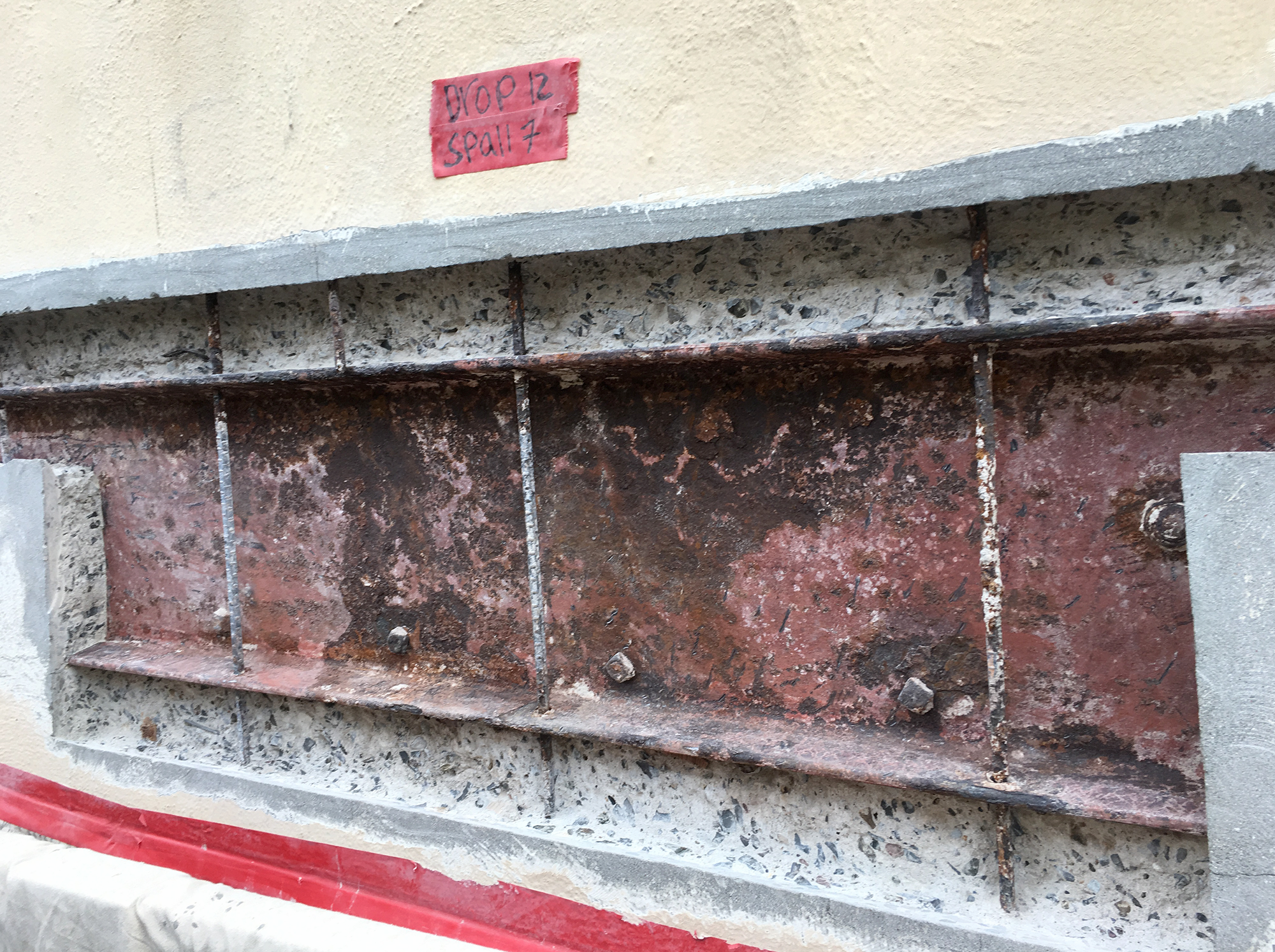

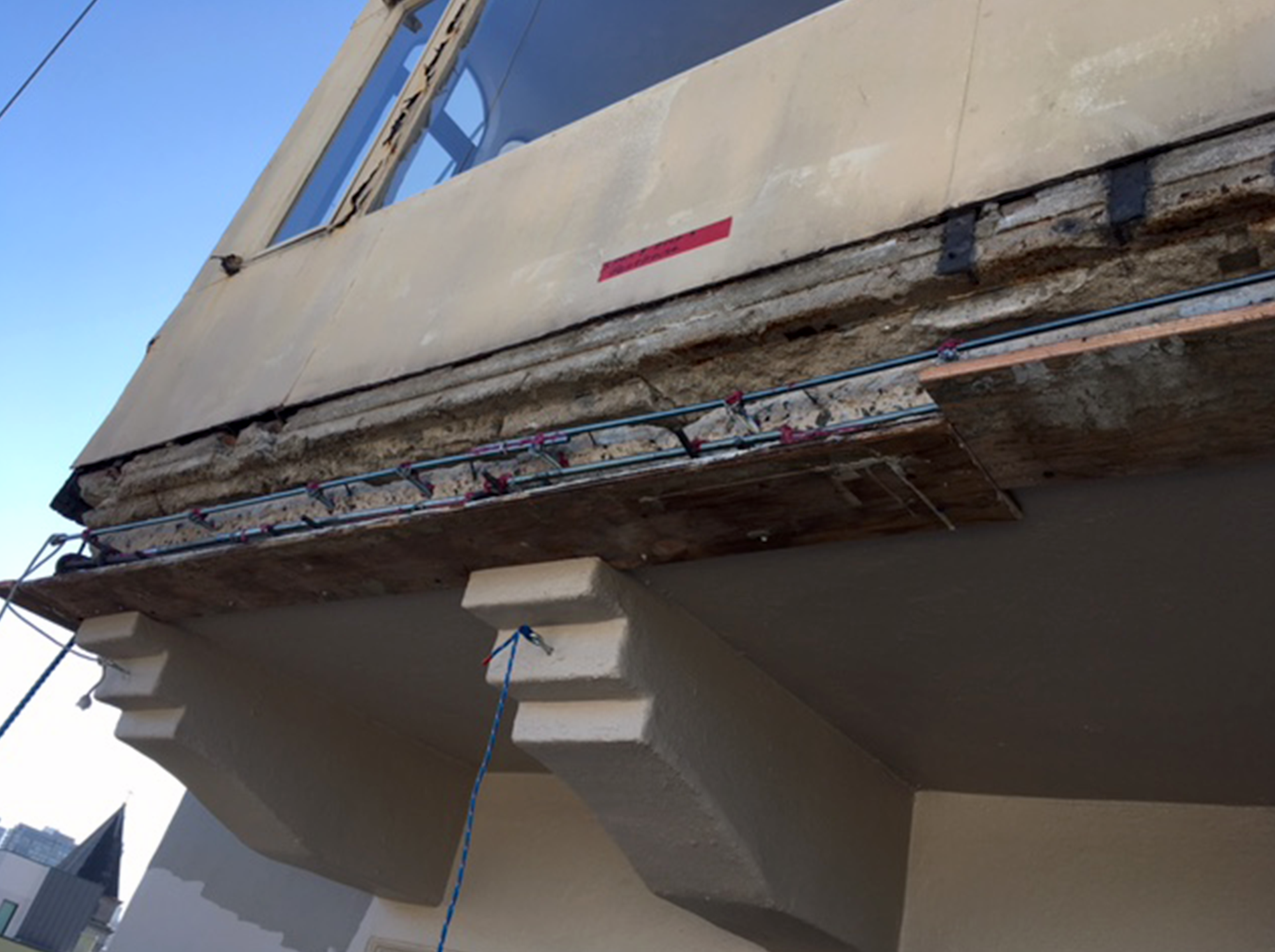
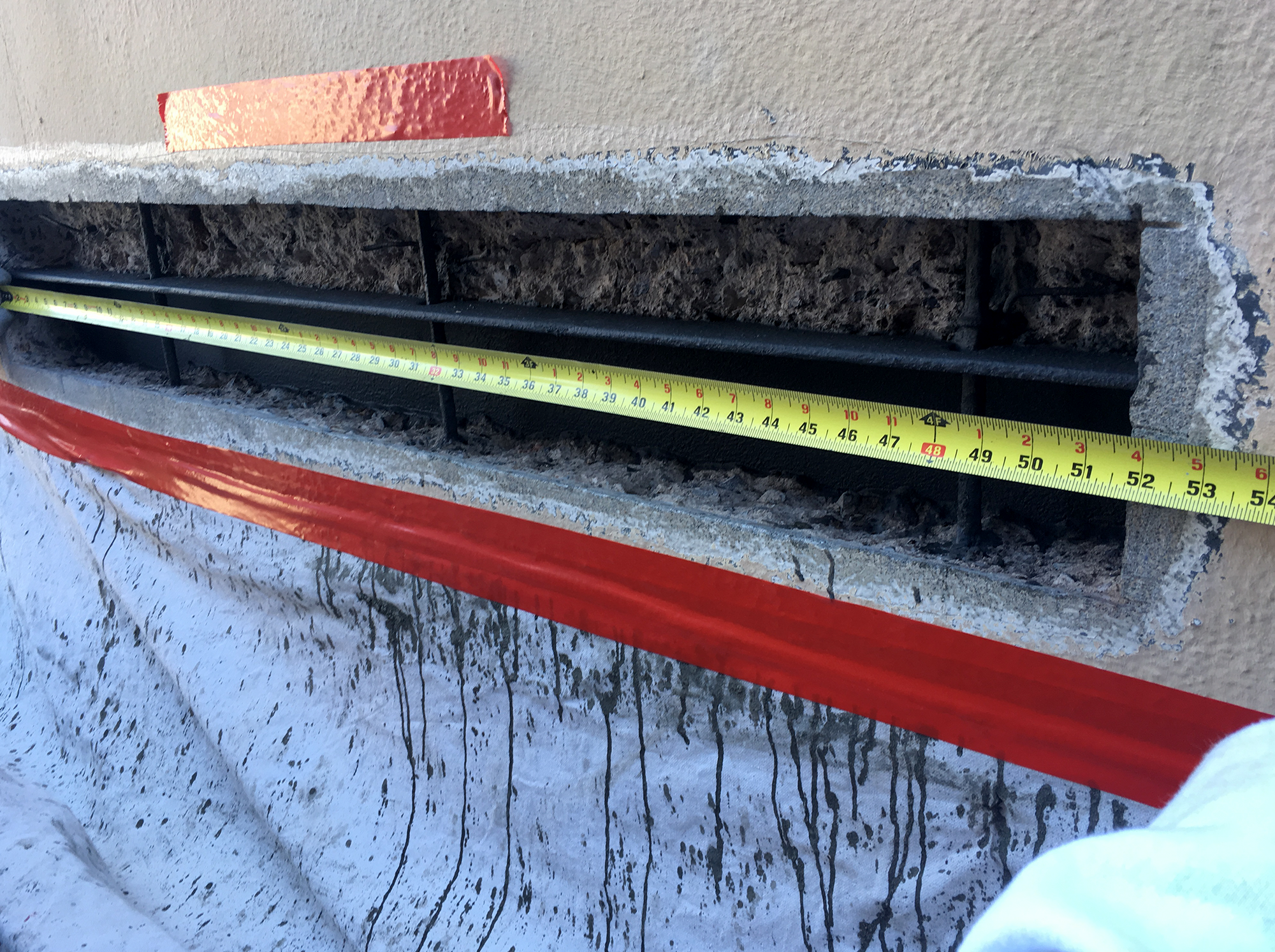
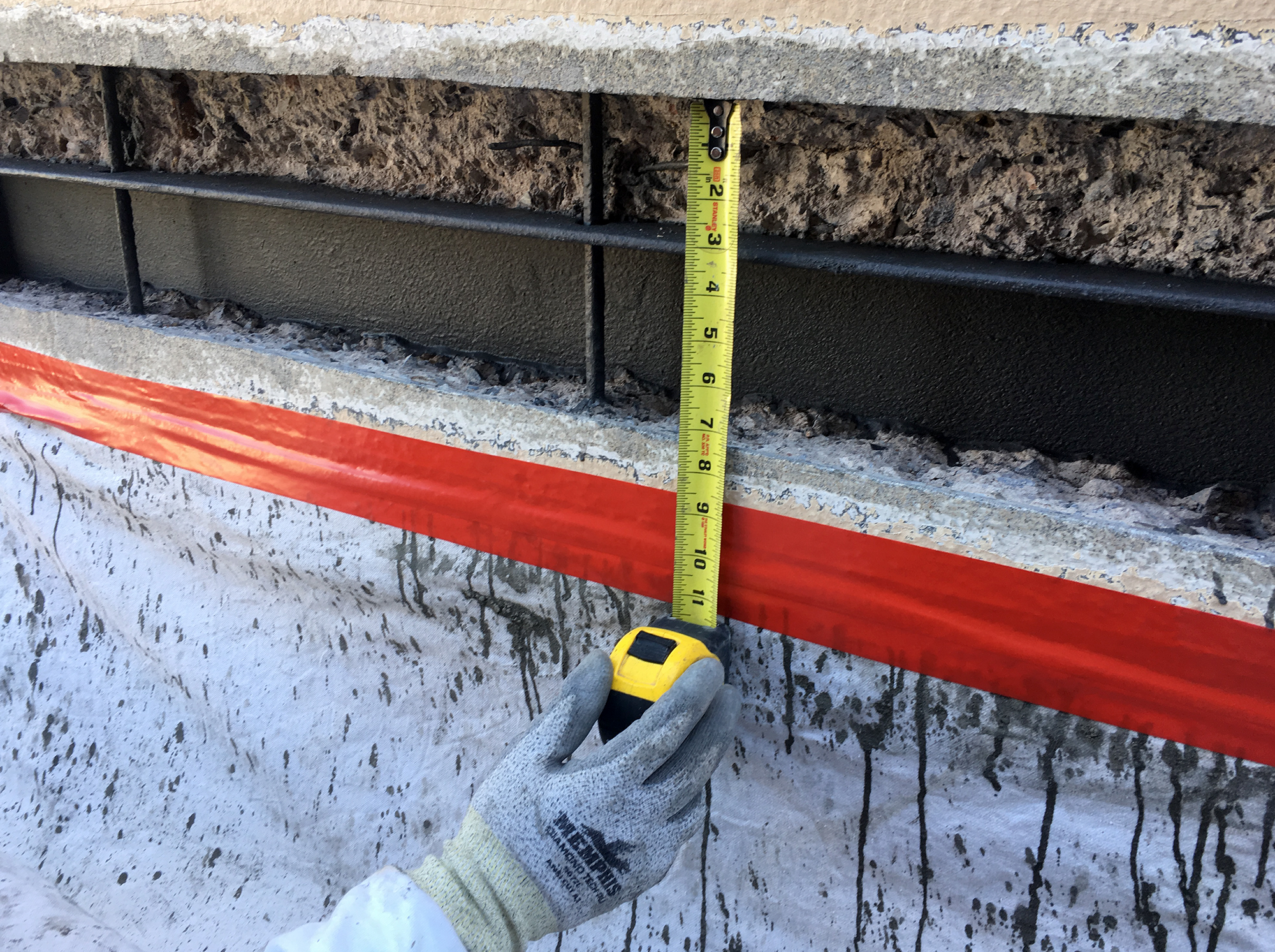

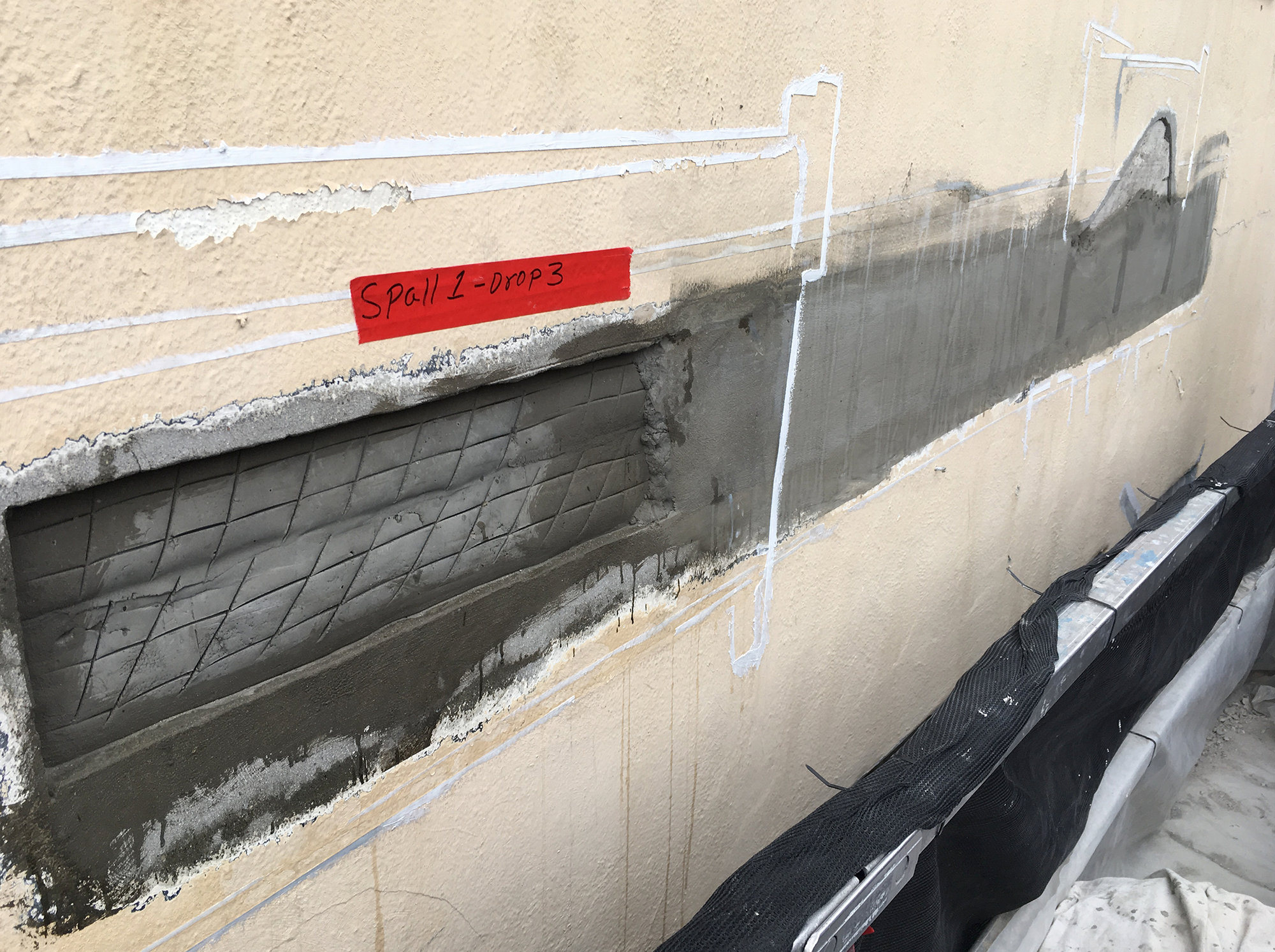
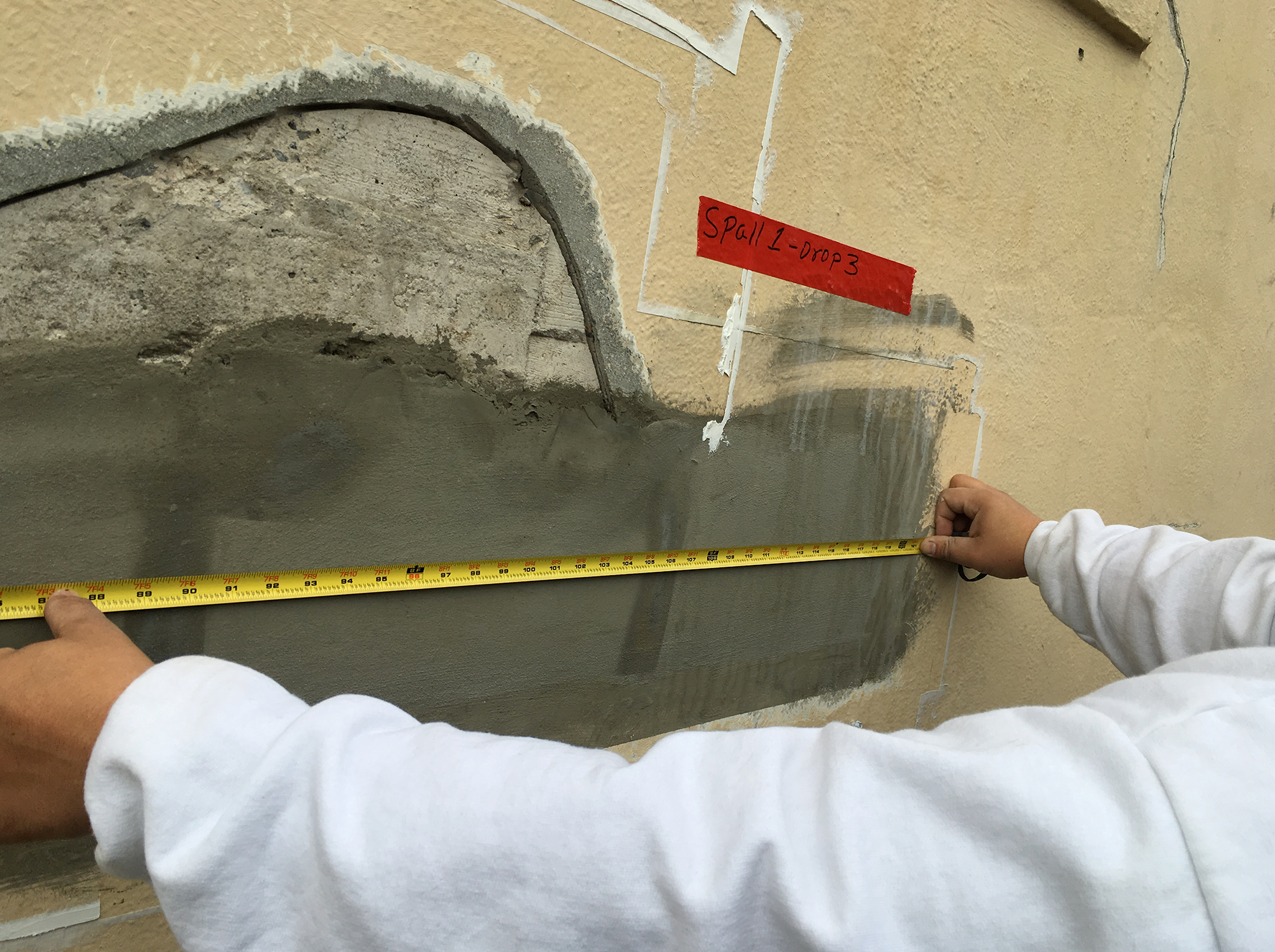
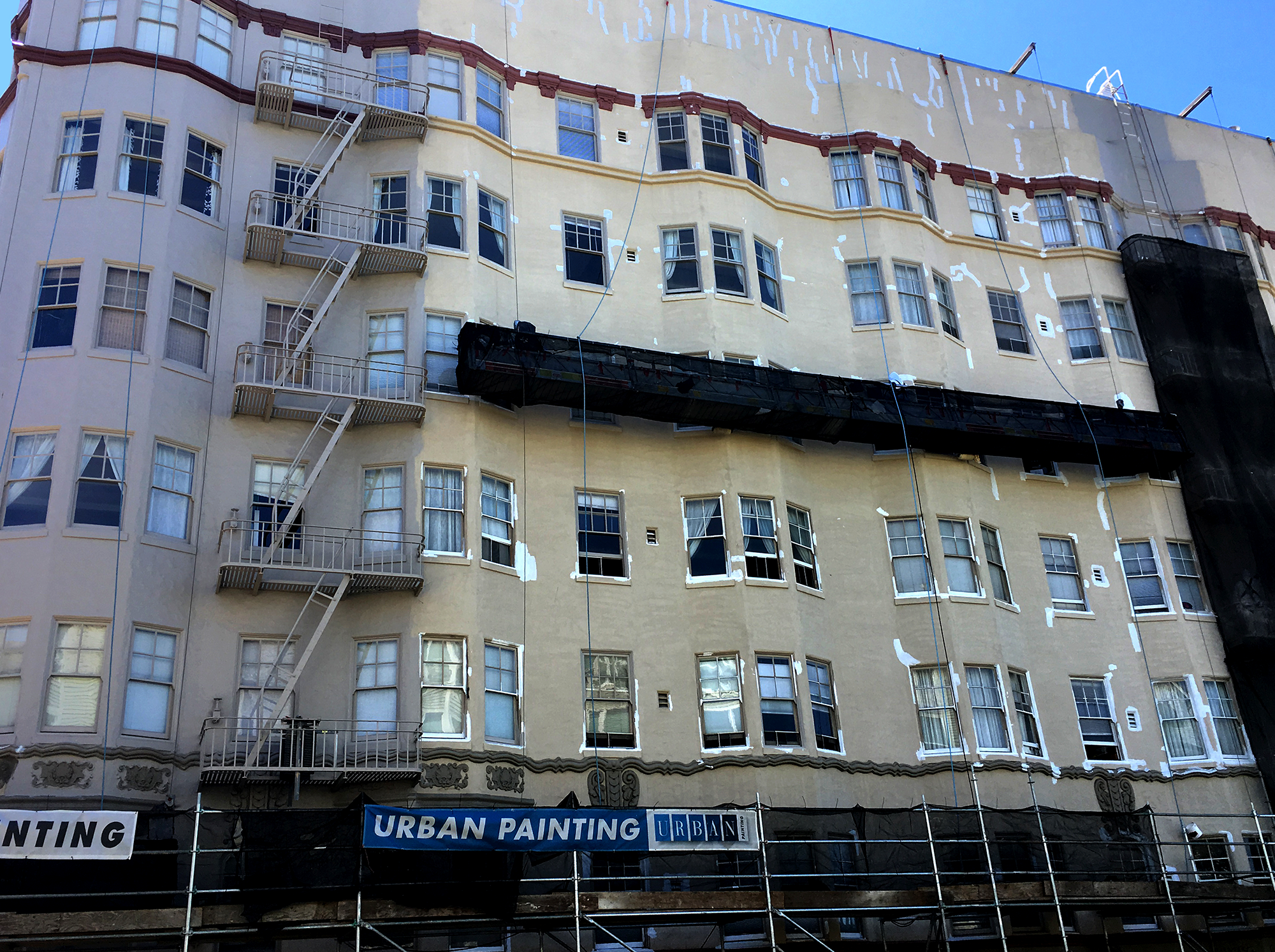
What We Did
Coated over 45,000 sf of walls
Prepped and painted over 250 windows
Repaired nearly 350 sf of concrete spalls
Project Details
To help the owner manage costs for the project, our team accessed the building using swing stages. At the beginning of each drop, the walls were “spund tested” to locate concrete spalls. Cracks and bulges in the concrete are obvious signs of a spall, but that doesn’t always indicate the extent of the spall.
Plus, there are locations that are on the way to spalling but have not breached the surface and caused the cracking. These are incipient spalls and can be located by tapping the surface of the wall with a hammer. When you hear a hollow sound, that indicates loose or delaminated concrete underneath the coating and should be repaired.
Urban tracked the spalls for the owner; to assist with budgeting and for future reference, we tracked the condition with spall logs that included measurements and photos of each.
With the concrete repairs complete, the project transitioned to a more typical coating job: areas not scheduled for paint were masked, all surfaces were washed, and two coats of premium exterior acrylic were applied. Wood windows were scraped, loose or missing glazing was repaired, and the windows were fully primed and topcoated. The metal fire escapes were washed, loose coating removed, primed with a rust-inhibiting primer, and then two coats of industrial-grade direct to metal coating were applied.
A complete facade restoration like this gives the owners peace of mind knowing that loose and unsound concrete has been remedied, critical interfaces have been caulked, and a brand new coating has been installed to protect all surfaces.
Want to know how we can help with your next project?

